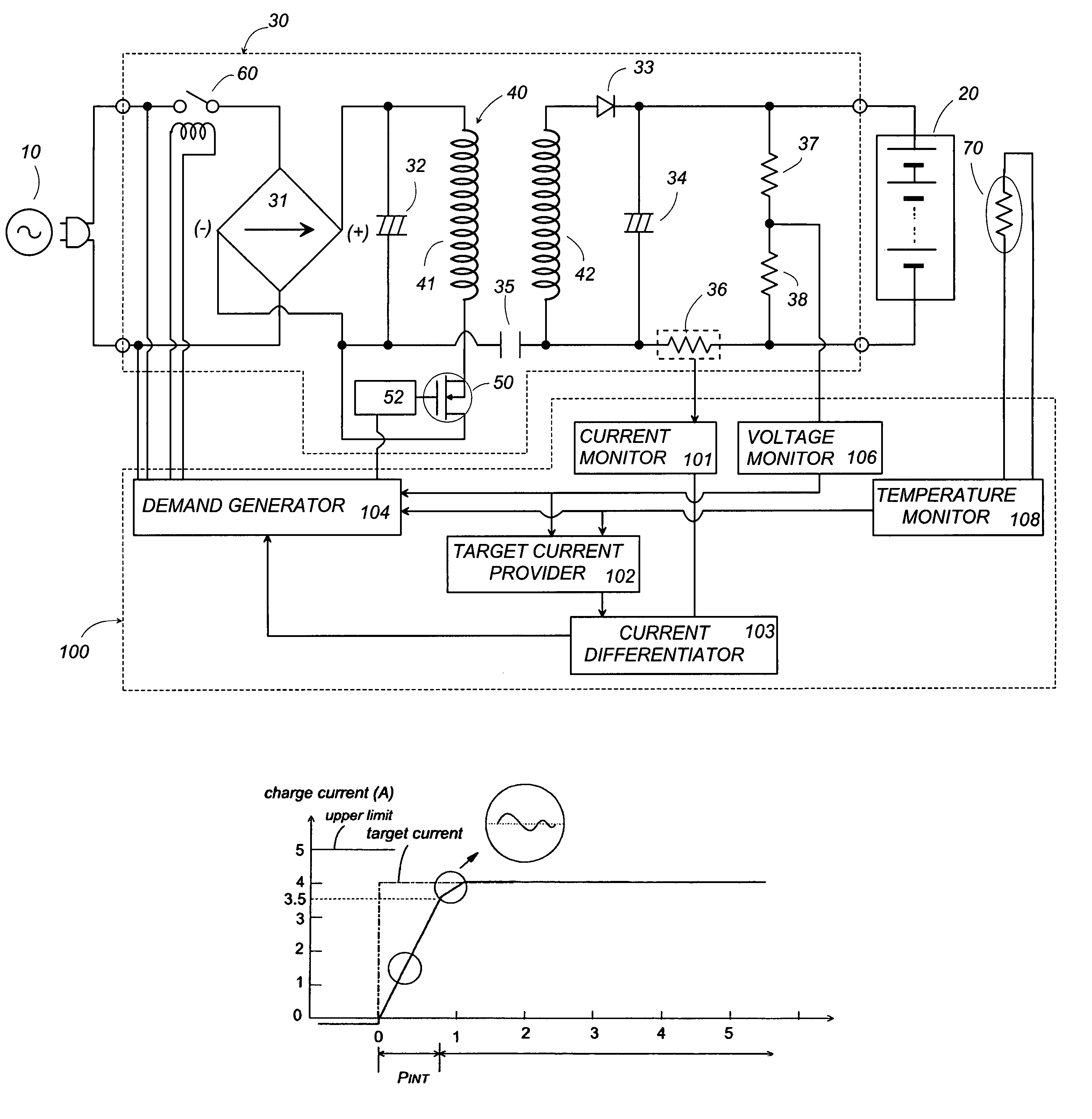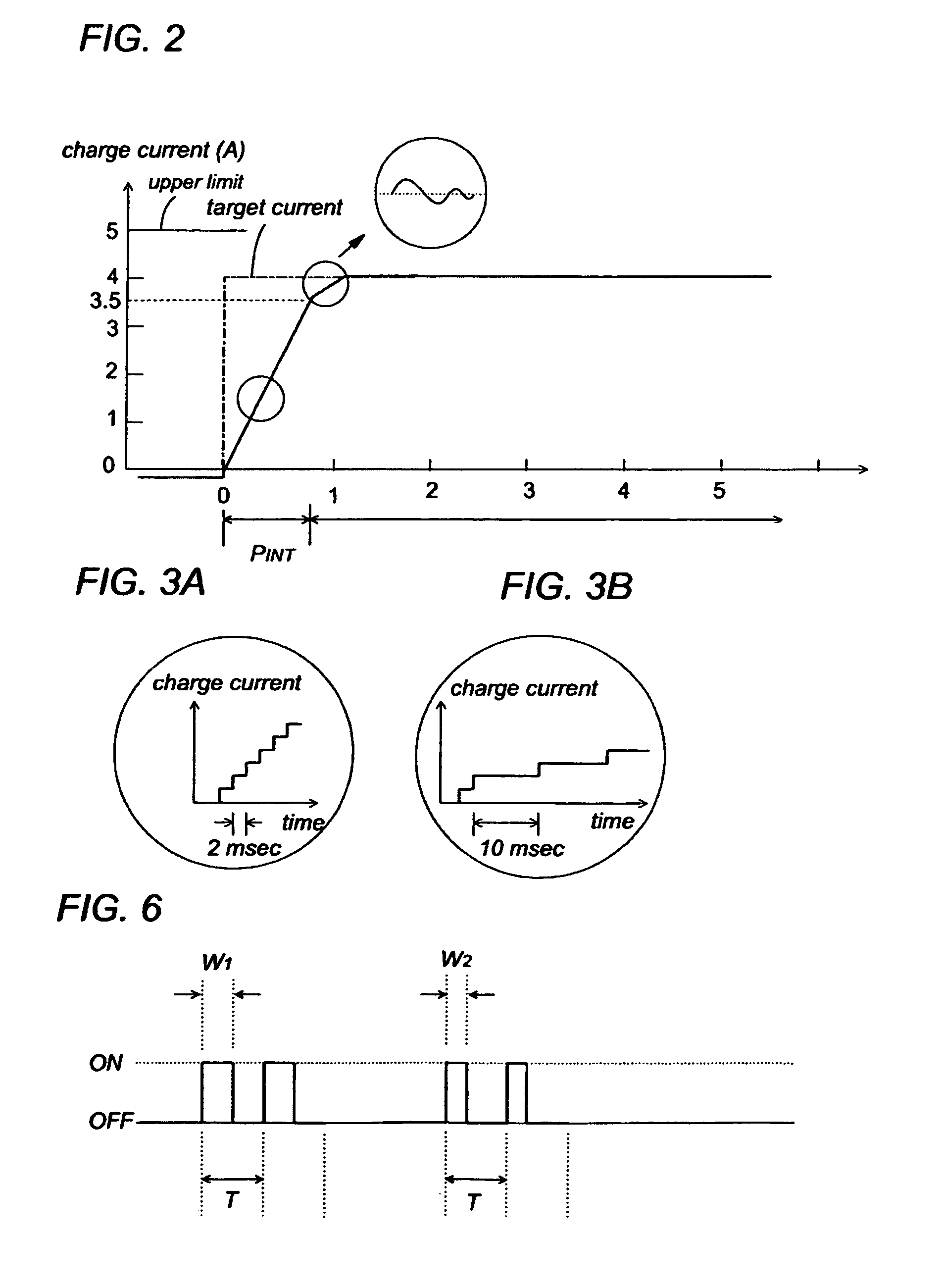Constant-current battery charger
a battery charger and constant current technology, applied in electric power, electric vehicles, transportation and packaging, etc., can solve the problems of prolonging the time for reaching the target current, difficult to make a rapid increase of the charge current towards the target current, etc., and achieve the effect of increasing the charge curren
- Summary
- Abstract
- Description
- Claims
- Application Information
AI Technical Summary
Benefits of technology
Problems solved by technology
Method used
Image
Examples
Embodiment Construction
[0020]Referring now to FIG. 1, there is shown a battery charger in accordance with a preferred embodiment of the present invention. The battery charger includes a power supply 30 configured to receive an AC voltage from an AC power source 10 and convert it into a DC voltage for supplying a charge current for recharging a secondary cell 20. The power supply 30 includes a rectifier 31 in the form of a diode bridge providing a rectified DC voltage which is then smoothed by a capacitor 32 connected across the output of the rectifier 31. Also included in power supply 30 is a transformer 40 with a primary winding 41 connected across the output of the rectifier 31, and with a secondary winding 42 connected across the secondary cell 20. A switching element 50, for example, FET is connected in series with the primary winding 41 across the outputs of the rectifier 31 in order to periodically interrupt the smoothed DC voltage at a high frequency to induce a corresponding AC voltage across the ...
PUM
 Login to View More
Login to View More Abstract
Description
Claims
Application Information
 Login to View More
Login to View More - R&D
- Intellectual Property
- Life Sciences
- Materials
- Tech Scout
- Unparalleled Data Quality
- Higher Quality Content
- 60% Fewer Hallucinations
Browse by: Latest US Patents, China's latest patents, Technical Efficacy Thesaurus, Application Domain, Technology Topic, Popular Technical Reports.
© 2025 PatSnap. All rights reserved.Legal|Privacy policy|Modern Slavery Act Transparency Statement|Sitemap|About US| Contact US: help@patsnap.com



